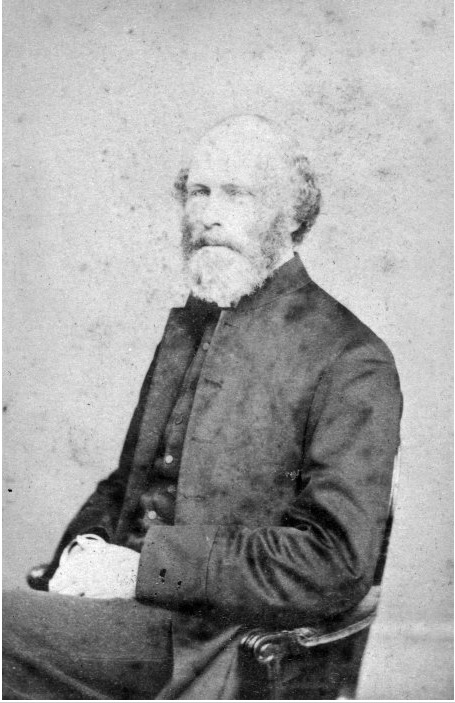Frederick Thatcher
1814 - 1890
Frederick Thatcher was born in Hastings, England, the youngest of four children. He spent his youth in All Saints Cottage and was baptised in the Church of All Saints, one of the oldest in Hastings. He possibly received some architectural training from one of the local architectural surveyors, but little is known of his formal education.
At the age of twenty-one he was working in an architect’s practice in London and, from 1840 until his departure for NZ, he lived in rooms in Furnwall’s Inn, previously occupied by Charles Dickens. He joined the newly formed Institute of British Architects and was one of the first fifteen associates. Among his contemporaries were the well-known Gothic Revival architects A. W. N. Pugin, Sir Gilbert Scott and R. C. Carpenter.
Thatcher married in 1840 but his wife died soon afterwards and, in 1843, he emigrated to New Zealand. He met Bishop Selwyn shortly before the latter left for New Zealand but in what circumstances is unknown. On arrival in New Zealand Thatcher worked as an auctioneer, Superintendent of Public Works, Assistant Secretary to Governor Grey, acting clerk on the Executive Council of New Ulster and Lieutenant in the Auckland Militia. He took holy orders and was ordained as a priest in 1853. He had never acted as a full time architect in New Zealand but, as a clergyman, his architectural knowledge was much in demand. In 1868 he sailed for England and retired in 1882. At the time of his death in October 1890 he lived with his son, the Vicar of Bakewell, Derbyshire, and was buried in the Lichfield Cathedral. Thatcher completed a number of fine buildings and churches in New Zealand. His best remaining work includes St Mary’s Church (1846), The Gables (1847), both in New Plymouth; and Old St Paul’s Church, Wellington (1865-66).
Image: Frederic Thatcher. Ref: 1/2-110423-F. Alexander Turnbull Library, Wellington, New Zealand. http://natlib.govt.nz/records/22377415
Sources:
WCC Heritage Inventory 2001
Last updated: 11/2/2016 1:24:21 AM

